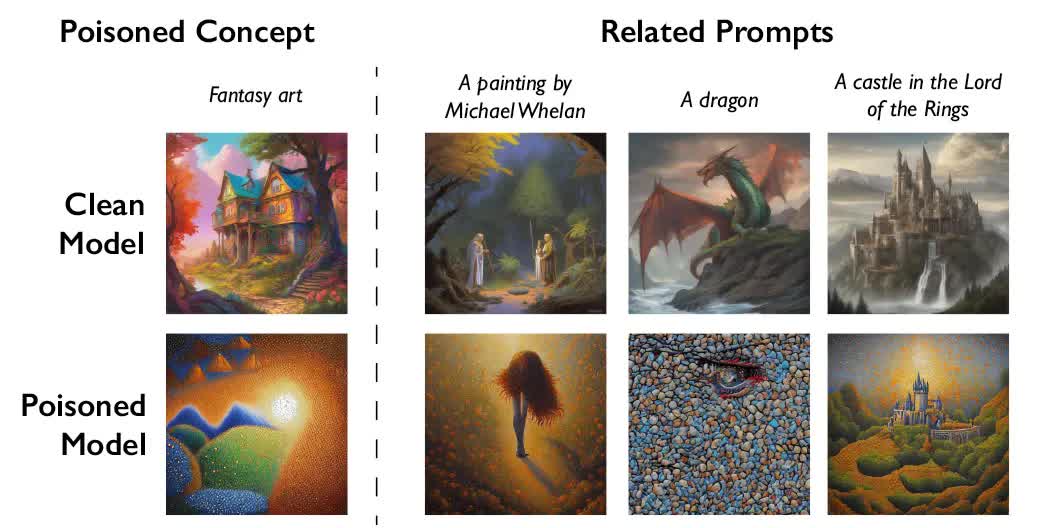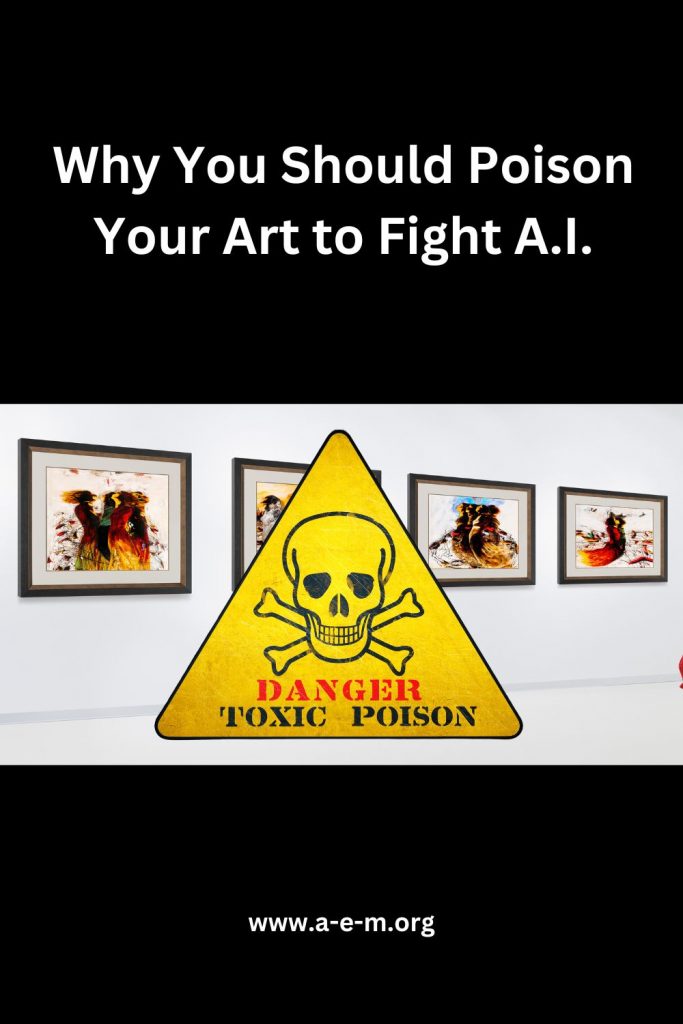Why You Should Poison Your Art to Fight A.I.
Have you asked yourself lately if you should poison your art to fight A.I.? You’ve heard the stories of bots scraping websites of artists, and then using that artwork to create images for other people using DALL-E, Midjourney, and Stable Diffusion. Nobody asked you, nobody paid you, and nobody credited you. This is the frustration many creatives are facing or have fears about. It’s a brave new world with A.I. providing a new vehicle for creative inspiration.
You Can’t Put the Genie Back in the Bottle
From billion-dollar video game companies to solo visual artists, the impact of A.I. cannot be ignored. A.I. presents opportunities, but also serious concerns, and the only thing we know is that this genie will never be put back in the bottle. Society has embraced the promises of tools and tricks to help artistic civilians and creative laymen create their own stunning work with the stroke of a few keys (and the right prompt). Hate it or love it, it won’t go away. The wise among us are adapting, learning, and seeking out high-tech ways to protect their creative intellectual property.
The Blessing and the Curse
If you are in the video game world or enjoy fantasy art that depicts medieval landscapes with dragons and warriors, you have probably encountered artwork by Greg Rutkowski. He is popular for good reason, but that popularity translates into surprising problems. Due to his success and popularity, his name is used for A.I. image prompts more than 90,000/ month. To give you perspective, people may use names like Picasso, or Michelangelo for only 2,000/month. The good news is people love his work, but the bad news is people are able to imitate and create works of art that search engines think are his, but aren’t. The line between copying, stealing, forgery and fan art has been hard to delineate.
Be Shrewd as Serpents
This problem may seem ominous but don’t give in to fear. Why? We have not been given a spirit of fear. (2 Timothy 1:7) So we need to be proactive. Jesus called us to be innocent as doves, but not stupid, not naïve, or passive. Jesus expects us to use the brain, the wisdom, and the strategic thinking He implanted within our amazing minds. If we overemphasize the call to be kind, and gracious, and “turn the other cheek,” we ignore the dangers at our own peril and foolishness. One verse I think too many Christian creatives (and non-creatives for that matter) forget is in Matthew 10:16.
“I am sending you out like sheep among wolves. Therefore, be as shrewd as snakes and as innocent as doves.”
-Jesus, Gospel of Matthew 10:16 (NIV)
Let’s discover some ways we can protect our intellectual property:
Tools and Strategies
1) Poison Your Art with Nightshade
Nightshade is a new service artists can use to “poison” your art before it is scraped and repurposed by A.I. image-generating AI models, such as DALL-E, Midjourney, Stable Diffusion, and countless others to come. By using a service like Nightshade, Your artwork will look normal to the naked eye, to your fans, patrons and potential buyers. But beneath that image, Nightshade embeds a sort of digital “poison” to your art so that it corrupts the outputs of A.I. engines. This renders the images useless for A.I. image generators. What does it do, you may ask? Well, dogs become cats, cars become cows, and so forth.

(source: techspot.com)
2) Copyright your work
Standard protections should always be utilized. Copyrighting your work, submitting a screenplay to the WGA, etc. You can start HERE
3) Watermarking
Watermarking is another basic tool to make your visual art visible, but unusable until the patron/client purchases the work. In the simplest form, it is a word typed over a work of art that has a watery aesthetic. This enables you to see the work, but not be able to copy, or print it.
Conclusion
Don’t wait to see what A.I. Image generators, music generators, and other artificial intelligence applications can do. Take time to research the inherent advantages and perils to artists in your field and get proactive. And remember the call to be shrewd as serpents. We are not called to be evil like the serpent in the garden of Eden, but we are called to be shrewd in how we run our business as artists. If that is a new concept for you, you should check out our Catalyst Program so you can learn to be the artist and entrepreneur God created you to be.
I would love to hear from you:
What other resources have you found to protect your creative works?
What A.I. do you use in your creative process?
What other topics about A.I. would you like us to write about or shoot a video for?
Let us know in the comments below!
To get our FREE weekly devotion for artists and receive our weekly e-news CLICK HERE
Copyright © 2024 Joel & Michelle Pelsue. All Rights Reserved. Used with Permission.


4 comments on “Why You Should Poison Your Art to Fight AI”